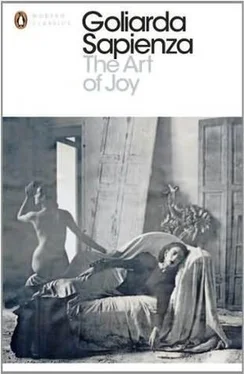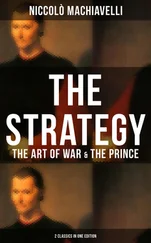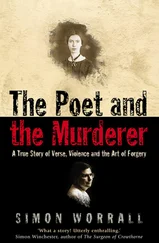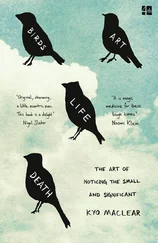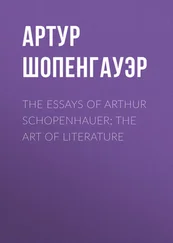In the mirror — it’s been a long time since I’ve looked at myself — Carlo’s face stares back at me. Or maybe it’s my habit of speaking with him that calls his features to life, moulding my smile and my eyes into his, the urge to keep those we love alive? In me, he is reborn in the mirror, alive, smiling … I understand why you’re smiling, Carlo: the dead don’t want us to die with them. They want us to keep them alive, in our thoughts, in our voices, in our gestures. With his hands, I pull a strand of hair down over my forehead … to be like him!
Since the morning when I woke up with my head shaved because of the wound, I’ve had short hair. Should I let it grow again? In a few years, I could once more have the braids which mattered so much to me as a child. A longing for those braids constantly threatened by the convent’s scissors makes me want to see them again. At the time, Cavallina saved them in a drawer somewhere … There they are, long and thick, with a colour so vivid that touching them, my heart nearly leaps with fright. But as soon as I pick them up, distaste for that dead part of me makes me fling them in the wastebasket. You can’t go back again. Besides, back then, I could hardly swim! The memory of those cumbersome braids in the water and on the pillow, the barrettes, hairpins, combs, the effort. No, I prefer that new face with its exposed neck: a boy’s face, like Carlo’s. I want to continue swimming without a bathing cap, like him. Even better, I want to swim to the rock of the Prophet and sweep back the mop of hair with a flick of my fingers, like him, before stretching out in the sun.
Anyone who’s had the good fortune to reach thirty knows how difficult, arduous and exciting it was to scale the mountain that rises from childhood to the summit of youth, and how quickly it goes: a waterfall, a geometric flight of wings in the sunlight, a few moments and … Yesterday I had the unlined cheeks of a twenty-year-old. Today — overnight? — the three fingers of Time have brushed me, a warning of the brief span remaining and of the final finishing line that inexorably awaits … A first, false terror of turning thirty.
What had I done? Had I wasted my days? Not enjoyed the sun and the sea to the fullest? Only later on, during the golden age of fifty, an age soundly vilified by poets and registry clerks — only then do you realize how much richness there is in the peaceful oases of being by yourself, alone. But that comes later.
At the time, the anxiety of missing the past and the future gripped me powerfully: What was I doing in that study? What meaning did that search for words have, all those papers, poems, stories, notes? Was I, unknowingly, about to fall into the mystical lot of becoming a poet, an artist? Was I, unknowingly, retracing the path of Beatrice, who, in order to exist in her own eyes and those of others, moulded herself into the sacred statue of a grieving widow, beautiful and respected? Was I, with her same relentlessness and determination, unknowingly raising a temple within me? And, would I, like her, lay down my life just to comply with the subtle venom of tradition?
Imprisoned in mourning, as tradition demanded, Beatrice fell ill with ‘consumption’ like her husband. Little by little, and with appalling placidity, the wax wind-up doll, which for years had wandered among the flowers and books, stopped within months: she had wound down.
What was I doing among those pens and pencils lined up on the desk? Or was it an altar? I had started it for pleasure … But looking within myself I saw my future: caught in that snare, legs broken by the trap of ‘being someone’. Though I had escaped the convent, the piety I had sent packing was creeping out again from some hole in my room, straddling the rat of aesthetics. I saw it, that mystical rat. Its eyes, reddened by insatiable hunger, peered out from the shadowy corners, voracious. They scoured my young flesh, my breast, seeking a crack to enter me and gnaw at the backbone of my skeleton, which was held together by joy. Stopping it, I knew that I had been right to be mistrustful, and that just a few more instants of unawareness would have made me fall from reality into the grip of the ‘artist’ drug, a drug more potent than morphine and religion. The rat realized it, looked away and fled.
The scar throbbed from my effort to peer into my future, and in the mirror I saw it redden and writhe for a few moments. A centuries-old message from my depths, it warned me to guard against myself, and go running in the sun. I would not resume the quest for poetry until I had proven to myself that it was for fun and only for fun, like picking flowers or riding Morella …
Bambolina was waiting patiently beside old Morella. Her dark bangs, wispy as a shadow, fell over blue eyes that were slightly more intense than Beatrice’s. I look for her across the lawn. Maybe she’s just hiding behind a hedge, waiting to pop out, making her sudden laughter more dear.
‘Don’t you feel like riding, Zia? Staring out at the sea like that … It’s all right if you don’t feel like it. Maybe you’re tired.’
The same considerate voice, Carlo’s same thoughtful, caring attention … The scar on my forehead throbs, keeping back my tears, and I can’t help hugging her and lifting her up in the air. I want her to laugh. I want to hear Cavallina’s laughter again.
‘Oh, what fun, Zia, you’re making me fly! It’s been so long since you made me fly like this! How come you’re so strong?… Oh! Enough, stop! You’re tickling me. Enough, Modesta!’
When I’m serious she calls me Zia; when I’m playing with her, I’m Modesta.
‘Oh, what fun, Modesta! How strong you are!’
‘You’re just a scazzittula di picciridda , a little bit of a thing!.. You don’t weigh any more than a few ounces!’
‘But Prando can’t lift me.’
‘In a few years, you’ll see! And if you don’t watch out, he’ll send you flying right around the moon.’
‘Oh, what fun that would be, Modesta! Then when I’m big too, will you teach me how to fly? I love airplanes a lot. You’ll teach me, won’t you? Like you taught me how to ride a horse and how to swim?’
Now she’s rattling on excitedly like Beatrice, Carlo’s careful attention forgotten. What is she saying? She’s talking about some photographs she found …
‘And who is that handsome man? Jacopo and I opened a trunk up in the attic. He took a bunch of books and a … what do you call that thing you look in to see everything bigger?’
‘A microscope.’
‘And I took some photographs. Who was that handsome man near the airplane? Prando says he was my papa, but he was joking because my papa wasn’t a pilot, was he? So who was he?’
‘That was Ignazio, your Mama’s uncle.’
‘And were all those airplanes his?’
‘Oh, no! He flew them. He was a pilot.’
‘What fun! When I grow up I’m going to be a pilot too!’
‘Of course, Bambolina. Now let’s ride before the sun gets too hot. Come on, that’s it. Faster!’
* * *
Pietro was waiting for me in the study, cap in hand, unchanged — how old was he now? Maybe as old as the fire wheel that Carmine used to drag down the slopes of the Mountain.
‘ Voscenza benedica , my respects, Princess. Please forgive Pietro for disturbing you. But it’s an urgent matter.’
‘No need for apologies, Pietro. I know you come to see me for a reason.’
‘I’ll get to the point then, or rather, two points. One is a matter of great joy for Pietro and his wife. The other is a painful matter that eclipses the joy in my heart.’
‘Tell me, Pietro! Speak freely in sorrow and in joy … Don’t stand there mute, turning all red!’
Читать дальше
